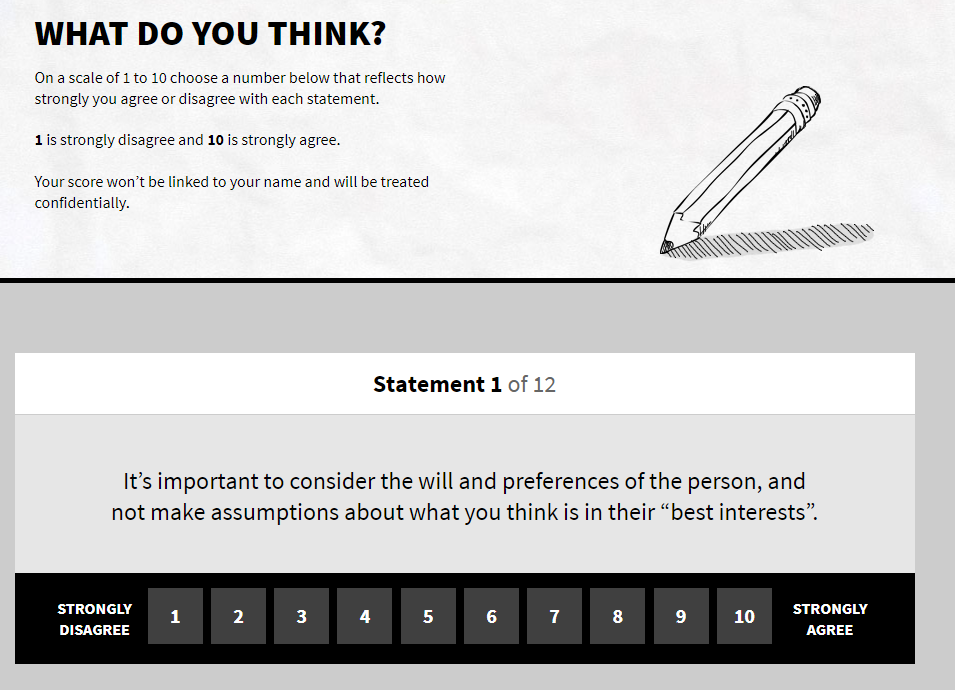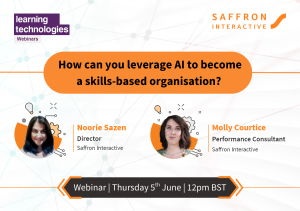Digital disruption continues to accelerate and the demand for digital transformation within the workplace has never been greater.
With 84% of employers on track to digitise their working processes, the need for agile employees that can keep pace with transformation has become imperative.
Recognising that digital transformation can improve productivity is one thing. But reaching the promised land of a highly-efficient and agile workforce is another. That poses an entirely new conundrum for organisations. Whilst 87% of executives recognise the skill gaps in their companies, less than half of them know how to address the issues, and only 42% of employees actually take advantage of the development opportunities that are available.
So, we can all agree that ensuring your workforce can adapt and learn quickly is the most effective means of embracing digital transformation. But how can this actually be achieved?
Understanding the roadblocks
It would be easy to assume that time or resources are the main inhibitors of change. But often, it’s the learner’s own mental constraints that can be the biggest obstacle. How so? Well, whenever we intend to carry out an action, we are met with and controlled by cognitive biases. These are pre-existing understandings, conceptions, or stereotypes that we hold from our life experiences. You may want to think you don’t have any such biases but – sorry to tell you – you do and maybe it’s your own Bias Blind Spot that makes you think otherwise.
Despite the negative connotation, cognitive biases function to save time, energy, and formulate speedy responses in a fast-paced environment. They are short-cuts and help us avoid having to think every single action through. So they can have a productive purpose and are effectively the “default setting” for people’s day-to-day behaviours. But if we are looking to change those behaviours, we are going to have to address those biases.
However, there are, in fact, over 170 cognitive biases, and that is a lot to tackle for one L&D department! But instead of attempting to uncover and address each individuals issue, we can counteract them more widely by encouraging the learner themselves to uncover their own biases.
Overcoming the obstacles
A strategy that directly supports learners in their transition towards change, by overcoming their biases and leading them to action, is necessary. James Prochaska’s Six Stages of Change provides an excellent framework upon which we can build – we’ve been a little creative by combining action and maintenance to make five!
Prochaska himself largely deals with major life-changes, but the model itself can be applied to any behavioural change. That might be in the context of a longer-term development or even within the context of a single learning event.
So let’s take a look at how these stages can be turned into practical steps to transition a learner from thought into action.
Pre-contemplation
In this stage, the learner is still deep in their own biases and is furthest from change. They may feel that what they are already doing is sufficient and any new information we give them is just going to bounce off. They are simply not ready to learn.
If we think of this as one-off learning event – be that a digital course or otherwise – it is most difficult for a learner to take in new information at the start as there are so many barriers. So how do we get around this? We first need to prime the learner and get them to reflect on their own experience – their pre-existing biases. One method we, at Saffron, use is diagnostic tools, such as the Likert scale. Here a learner is asked to rate how strongly they agree or disagree with various statements. These are statements of attitudes or beliefs and there are no right or wrong answers. Rather the learner is prompted to reflect back on their own thoughts. The objective is to awaken the gray matter and getting the learner thinking.
Contemplation
This moves them to contemplation. The learner is now alert but in a state of confusion because they are overwhelmed with new information. L&D’s role now is to gently influence and lead the learner.
By using a step-by-step approach, we can edge learners closer to the next stage. We need to guide them to make informed decisions and utilise personalised functionalities, such as ‘test and tell’, that both challenge and support them.
The ‘test-then-tell’ approach is a behavioural science method whereby the learner is first asked a question before being provided with the answer or feedback. It can be used both to impart factual information or challenge attitudes or biases. It’s primary aim is to encourage the learner to first examine their pre-existing knowledge or bias, priming their minds and making it more receptive to the feedback that follows.
Preparation
When the learner is in this stage, there might be a detailed plan, but no action has occurred yet. The learner has now accepted that they need to do something but choosing the right action is a big dilemma. There is a lot of new information but maybe not enough time and the learner might find themselves paralysed.
The method of counteracting this is by personalising the learning experience as much as possible; getting the learner to take ownership of their own journey. Studies such as the IKEA effect show that people place higher value on products they partially created. As L&D, we can provide the tools and encourage the learner to formulate their own plans. One technique we use at Saffron are ‘personalised toolkits’. Here the learner is guided with suggestions, but the learner chooses their own actions and can add their own notes or comments. They develop a plan, unique to themselves.
Action & Maintenance
L&D takes a step back here and puts trust in the learner to action the necessary changes. They’re not left completely on their own however, as measurable indicators and KPIs can track how they get on over a set time period. What one might find though, is there can either be a dip in this change, or some learners return to old, more comforting habits. This is where the significance of maintenance comes in.
The initial change is great, but it is equally important – maybe more important – for that to be maintained. That’s what distinguishes behavioural change, as opposed to regular change. Remedial or follow-up learning interventions must be used here. Continual coaching opportunities – more viable now for wider audiences through the use of AI – can be even better, enabling learners to consistently assess their performance, identify gaps, and take action against them can reinforce the change and build the behaviours that the business needs.
Termination
This leads us to termination, which means that the change is now a normal part of the learner’s behaviour. But be wary of ‘inauthentic action.’ This is where on the surface you might get the desired response, for example if someone passes an assessment ten minutes after taking a course – but the behavioural change never materialises! If that occurs, chances are that we didn’t overcome those biases at the get-go and follow the process through.
Conclusion
Digital transformation is the only way forward and our employees need to be equipped to deal with the liquid modern workplace. Learners need to address and face their cognitive bias rather than be paralysed by the struggle. As L&D, we need to understand the issues and the process so we can guide the learner and reaching the promised land of the highly-efficient and agile workforce.
The five steps described above provide a roadmap for guiding learners through this transition, against the backdrop of the overwhelming transformation that is happening around them. They also serve as a learning infrastructure which employers can utilise to achieve an agile workforce that is able to keep pace with the future of work.
The stages described above are cyclical, of course. So whilst the learner might have reached termination for one objective, the learning process isn’t finished. Learning is a never-ending process, this ‘conclusion’ signifies a beginning of a new cycle. But, over time, the learner becomes accustomed to the process and trained in challenging themselves, unprompted. Then we have the self-determined learner as part of a learning culture. But that is another subject and one that you can explore here, in my colleague’s blog The (Learning) Culture Catch.








